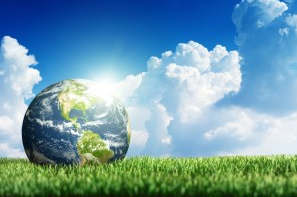ABU DHABI // The UAE has committed to provide almost a third of its energy needs through clean sources by 2021.
Dr Thani Al Zeyoudi, Minister of Climate Change and Environment, on Monday said the country would obtain 27 per cent of its energy from nuclear and renewable sources, up from the previous commitment of 24 per cent made this year.
This year the UAE ratified the Paris Agreement, where 195 states committed to reduce global warming to 2°C below pre-industrial levels.
“We are committed to fulfil our part in supporting international efforts to address the effects of climate change,” said Dr Al Zeyoudi.
Almost half of the UAE’s carbon dioxide emissions come from the energy sector. Emissions must be severely reduced within five years if it is to meet the commitment, the report said.
“To develop an effective reduction programme we have to understand the sources of emissions,” said Razan Al Mubarak, head of the Environment Agency Abu Dhabi.
“Greenhouse gas inventories are important not only because they provide the scientific understanding of the sources of emissions of which policy formulation is based on.”
Improvements in production and emission control in various sectors show Abu Dhabi could reduce about 40 per cent of emissions by the year 2030, Ms Al Mubarak said.

The UAE’s Greenhouse Gas Inventory, released on Monday, was compiled with data from 18 government and non-government agencies, including the Abu Dhabi Water and Electricity Authority.
Faris Al Dhaheri, director general of the authority, said greenhouse gas emissions from water and electricity generation could be greatly reduced.
“We will continue to improve efficiency of our existing power plants and implementing ambitious plans to increase the contribution of renewables, in particular solar,” Mr Al Dhaheri said.
Shaikha Al Hosani, deputy executive director of quality at the environment agency, said that the report also covered emissions absorbed from foliage such as palm trees and the mangroves.
“Everybody knows that we have a very wide forestry, it is the biggest in absorbing 6 per cent of total emissions, although you might think that 6 per cent is low but it is our priority to continue the sustainable protection of forestry as key to reducing emissions,” Ms Al Hosani said.
She said that a little understood aspect of emissions was the importance of protecting forestry as “filters.” The report indicated that if all the mangroves in Abu Dhabi were to be removed, about 18 per cent of emissions would be released.
Having mangroves and other forest reserves, she said, was just as important to reducing emissions as clean energy or providing technologically efficiently methods of development.
The data was taken between 2010 and 2012, but the report uses the figures to create two projections into 2030.
One shows the trend of greenhouse gas emissions based on the growth from 2010 to 2012. The other, titled the Extended Emission Control Scenario, is a forecast of emissions under mitigation schemes already implemented or to be introduced by the Government.
The environment agency is working on the third and fourth versions of the Green House Gas Inventory, which will be published at closer intervals to when the data was collected.
Talks were also being conducted to share the data and technique of providing the report, so that other emirates could do the same.





